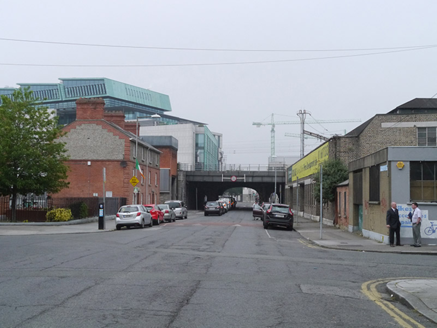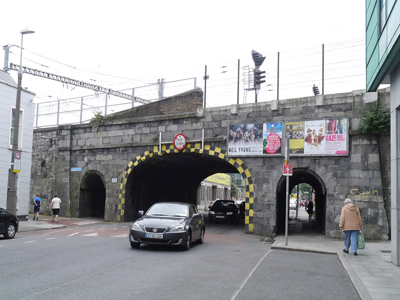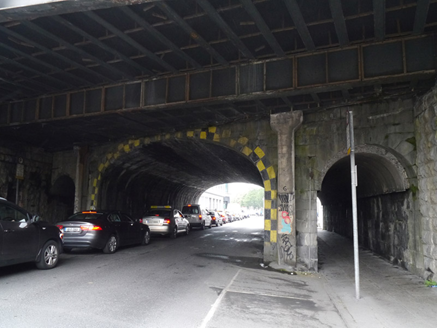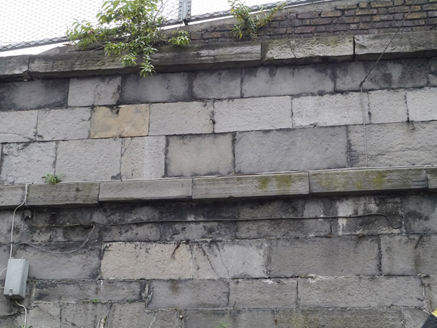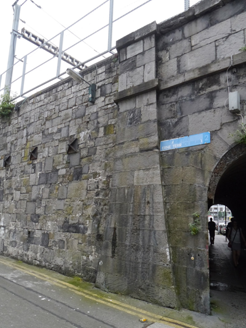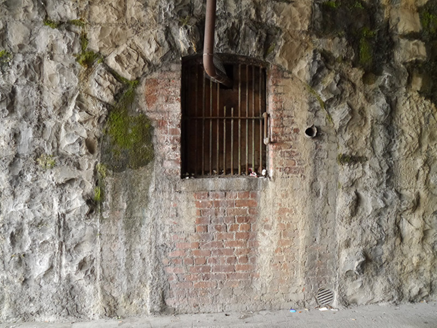Survey Data
Reg No
50100314
Rating
Regional
Categories of Special Interest
Architectural, Social, Technical
Original Use
Bridge
In Use As
Bridge
Date
1830 - 1835
Coordinates
316851, 233919
Date Recorded
07/06/2016
Date Updated
--/--/--
Description
Railway bridge, built c. 1833, carrying railway over Sandwith Street Upper, comprising elliptical-headed vehicular archway flanked by lower round-headed pedestrian archways. Extended to south c. 1960. Tool-faced ashlar limestone walling with projecting cut limestone stringcourse and coping to north parapet. East part of north parapet surmounted by later brick wall, and west part has replacement concrete coping. North elevation terminated to east and west by tapered piers, abutted by random ashlar limestone walls. Projecting rock-faced coursed ashlar limestone walls to either side of south elevation, extending southward and featuring pair of high-level round-headed openings to west with machine-made red brick surrounds and steel grilles affixed, and single round-headed former door opening, with rock-faced stone architrave and infilled with machine-made brick and having single opening with iron grille affixed. Southern extension comprises boxed-in steel lattice-trusses and steel rails, carried over flanking south walls, with pair of reinforced concrete piers fronting south elevation of original 1830s bridge. Abutted to south by associated water tower.
Appraisal
A handsome, well-proportioned, ashlar limestone railway bridge built to carry the Dublin and Kingstown railway line. Opened on 9th October 1834, railway line is the earliest in Ireland, linking Westland Row to Kingstown (now Dún Laoghaire) Harbour. It is one of the oldest standing railway bridges in the country. The rail network was one of the country's greatest engineering achievements and bestowed a wealth of industrial architecture and ancillary features that are testament to the skill and technical knowledge of those involved. The service transformed the character of the city.
